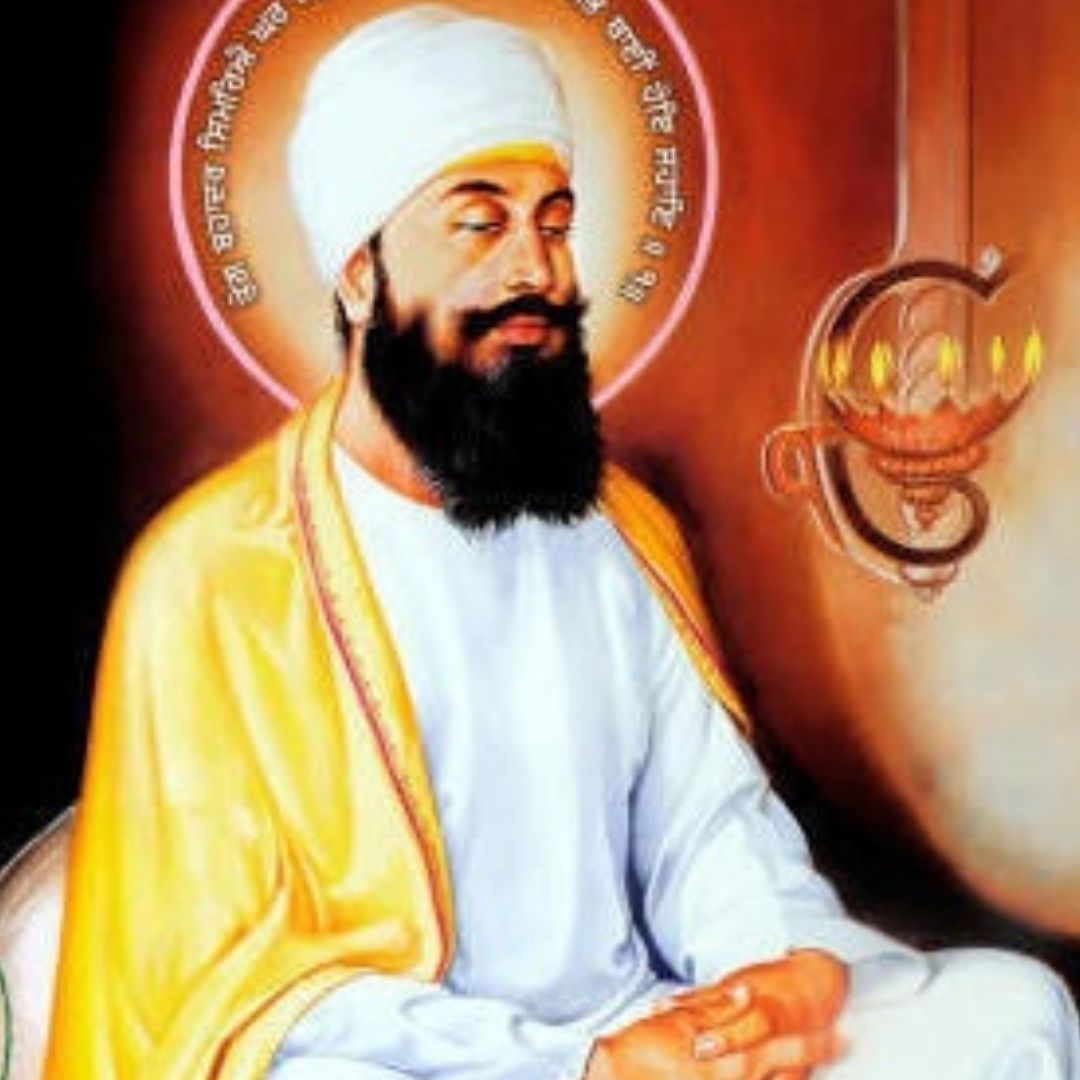
Image Credits: NIT Jalandhar
Guru Tegh Bahadur: Remembering The Ninth Sikh Guru On His Martyrdom Day
Writer: Tashafi Nazir
For most people, journalism sounds hectic and chaotic. For her, it's a passion she has been chasing for years. With an extensive media background, Tashafi believes in putting efforts on presenting a simple incident in the most interesting way.
Punjab, 24 Nov 2021 8:00 AM GMT
Editor : Palak Agrawal |
Palak a journalism graduate believes in simplifying the complicated and writing about the extraordinary lives of ordinary people. She calls herself a " hodophile" or in layman words- a person who loves to travel.
Creatives : Tashafi Nazir
For most people, journalism sounds hectic and chaotic. For her, it's a passion she has been chasing for years. With an extensive media background, Tashafi believes in putting efforts on presenting a simple incident in the most interesting way.
According to the Nanakshahi calendar released by the Shiromani Gurdwara Parbandhak Committee in 2003, Tegh Bahadur's martyrdom is remembered as the Shaheedi Divas every year on November 24.
Guru Tegh Bahadur was the ninth of ten Gurus who founded Sikhism, and the leader of Sikhs from 1665 until he was beheaded in 1675. He was born in Punjab's Amritsar, India, in 1621 and was the youngest son of Guru Hargobind, the sixth Sikh Guru. Known as a principled and courageous warrior, he was a learned spiritual scholar and a poet whose 115 hymns are included in Sri Guru Granth Sahib, the main text of Sikhism.
He later came to be known by Tegh Bahadur (Mighty of the Sword), given to him by his father after showing his courage in a battle against the Mughals.
Guru Tegh Bahadur was trained in horsemanship and archery. He also learned the old classics like the Vedas, the Upanishads, and the Puranas. He preferred lengthened spells of seclusion and contemplation.
How He Became The Ninth Sikh Guru
Sikh tradition has a myth concerning how Tegh Bahadur was selected as the ninth guru. Baba Makhan Shah Labana, a wealthy trader, had once prayed for his well-being and had promised to gift 500 gold coins to the Sikh Guru in case he survived. So, he went on to search for the ninth Sikh Guru. Moving from one claimant to the next, he made his obeisance and offered two gold coins to each Guru, believing that the right Guru would know of his silent promise.
Every "guru" he met accepted the two gold coins and bid him farewell. Then Labana gifted Tegh Bahadur the usual offering of two gold coins. In return, the Sikh Guru gave him his blessings and remarked that his offering was considerably short of the promised five hundred. Makhan Shah Labana ran upstairs and began screaming from the rooftop, "Guru ladho re, Guru ladho re" (I have found the Guru, I have found the Guru).
In August 1664, a Sikh Sangat arrived in Bakala and appointed Tegh Bahadur as the ninth guru of Sikhs. Diwan Durga Mal led the Sangat, and a formal "Tikka ceremony" was performed, conferring Guruship on Him.
Tegh Bahadur contributed many hymns to Granth Sahib, including the Shloks or couplets near Guru Granth Sahib's end. He toured many parts of the Mughal Empire and was asked by Gobind Sahali to build several Sikh temples in Mahali. His works include 116 shabads, 15 ragas. His bhagats are accredited with 782 compositions that are part of bani in Sikhism.
The Guru Granth Sahib includes his works that cover a wide range of topics, such as the nature of God, body, mind, sorrow, human attachments, service, dignity, death, and deliverance.
The primary nucleus of Sikh narratives remains the roughly contemporary Bachittar Natak, a memoir of Tegh Bahadur's son, dated between the late 1680s and late 1690s. More Sikh accounts of Tegh Bahadur's execution only started emerging around the late 18th century.
Rivalry With Mughals
The earliest Persian source to chronicle his execution is Siyar-ul-Mutakhkherin by Ghulam Hussain Khan, where Tegh Bahadur's (alleged) oppression of subjects is held to have provoked Aurangzeb.
However, Satish Chandra cautions against taking Hussain Khan's argument at face value. He was a relative of one of the closest confidantes of Aurangzeb-Alivardi Khan, and might have been providing an "official justification".
With time, strands of narratives from bardic chronicles were compounded to generate a popular narrative. Tegh Bahadur left his base at Makhowal to confront the persecution of Kashmiri Brahmins by Mughal officials but was arrested at Ropar and lodged in Sirhind jail. In November 1675, he was shifted to Delhi and asked to perform some miracle to prove his closeness to God or else convert to Islam.
However, the Guru declined and three of his colleagues, who had been arrested with him, were tortured to death in front of him. Later, Tegh Bahadur was publicly beheaded in Chandni Chowk, a busy market square close to the Red Fort.
Sikh holy premises Gurudwara Sis Ganj Sahib and Gurdwara Rakab Ganj Sahib in the national capital mark the places of his execution and cremation. According to the Nanakshahi calendar released by the Shiromani Gurdwara Parbandhak Committee in 2003, Tegh Bahadur's martyrdom is remembered as the Shaheedi Divas every year on November 24.
Also Read: All You Need To Know About India's First 'Food Museum' In Tamil Nadu's Thanjavur
 All section
All section














